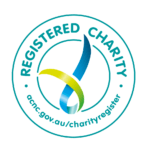Welcome to the 64th Emerge Australia Research Digest, where you will find summaries of some of the latest research and information about ME/CFS, with links to the complete articles.
You can also join our community and choose to have the Digest delivered straight to your inbox every fortnight on a Friday afternoon by signing up to our mailing list here.
We appreciate the support of everyone who reads the Digest – we encourage regular subscribers to support us with a monthly suggested donation of $2. You can sign up for monthly giving here.
Risks for Developing ME/CFS in College Students Following Infectious Mononucleosis: A Prospective Cohort Study
Authors: Jason LA, Cotler J, Islam MF, Sunnquist M, Katz BZ (Northwestern University, USA)
Publication: Clinical Infectious Diseases
Link: http://academic.oup.com/cid/advance-article-abstract/doi/10.1093/cid/ciaa1886/6048942?redirectedFrom=fulltext
Previous studies on American college/university students have shown that of the 1-5% of students who develop infectious mononucleosis (IM) annually, 9-12% of these individuals will meet the diagnostic criteria for ME/CFS six months later, and the severity of IM positively correlates with ME/CFS development. This longitudinal study aimed to determine whether there are any behavioural, psychological or immunological risk factors that predispose an IM patient to subsequently developing ME/CFS.
Students were enrolled in the study at the start of the school year (Time 1 (T1)). Students who were diagnosed with IM were then identified (T2), and were followed for six months (T3). At each stage, eligible students undertook a comprehensive set of questionnaires to assess autonomic symptoms (Compass 31), general symptoms (DSQ), fatigue (FSS), health (SF-36), stress (COPE scale and PSS), depression and anxiety (BAI, BDI-II), and a blood sample was collected. At T3, students were assessed to determine if they met one or more of the following ME/CFS diagnostic criteria: Fukuda, Canadian Consensus (CCC), Institute of Medicine (IOM). Students who met more than one set of criteria were categorised as severe ME/CFS (S-ME/CFS).
4,501 university students were enrolled into the study (T1) and 238 students went on to develop IM (T2). Five months post-IM diagnosis, 157 of the T2 students reported that they had recovered fully (67 of them were recruited as recovered controls), and 81 students reported that they were still experiencing ongoing symptoms (T3). 55 of these students met one or more of the Fukuda, CCC, or IOM criteria for ME/CFS diagnosis, and 20 students in this group were defined as having severe ME/CFS (S-ME/CFS).
The main findings of this paper were:
At baseline, neither ME/CFS groups differed from the recovered control group in respect to stress, coping, anxiety, or depression but did differ in their overall DSQ symptom score, with S-ME/CFS students scoring worse
S-ME/CFS students also had significant deficiencies in some cytokines at baseline compared to recovered controls, which the authors suggest may have influenced their immune response to IM infection
The authors conclude that that these findings suggest that underlying physical complaints (e.g. fatigue) and certain immune irregularities may predispose individuals to later develop ME/CFS after exposure to IM.
Numeric Rating Scales Show Prolonged Post-exertional Symptoms After Orthostatic Testing of Adults With Myalgic Encephalomyelitis/Chronic Fatigue Syndrome
Authors: van Campen CLMC, Rowe PC, Verheugt FWA, Visser FC (Stichting CardioZorg, Netherlands)
Publication: Frontiers in Medicine
Link: http://www.ncbi.nlm.nih.gov/pmc/articles/PMC7874746/
Orthostatic intolerance is considered to be an important symptom of ME/CFS. Previous work by the authors show that ME/CFS patients who undergo orthostatic stress using the head-up tilt (HUT) test describe a worsening of their symptoms such as pain, fatigue and concentration difficulties – symptoms that are also characteristic of PEM. This study aimed to determine if these symptoms would increase in the hours/days following a HUT, just as they do during an episode of PEM.
The study included 278 ME/CFS patients (meeting both the Fukuda and International Consensus criteria) and 30 healthy controls. In the ME/CFS group, 174 patients also met the criteria for Fibromylagia (FM). All participants underwent a HUT test. Directly after the HUT test and then again at 24 hours, 48 hours and 7 days following, all patients completed the numeric rating scales (NRS) of pain, fatigue and concentration.
The study found that at baseline (pre-HUT), all ME/CFS patients scored significantly higher in all three NRS compared to controls. NRS scores remained significantly higher in ME/CFS patients at all time points following HUT compared to pre-HUT values. NRS scores for pain were significantly higher at all time points for the ME/CFS patients with comorbid FM than for both the controls and the ME/CFS group without FM. Fatigue and concentration abnormalities were seen to peak directly after HUT, whereas pain scores peaked at 24 hours post-HUT.
The authors conclude that the significantly elevated NRS scores seen in ME/CFS patients even 7 days after performing the HUT suggest that orthostatic stress is an important determinant of PEM.
Hypothesis: Mechanisms That Prevent Recovery in Prolonged ICU Patients Also Underlie Myalgic Encephalomyelitis/Chronic Fatigue Syndrome (ME/CFS)
Authors: Stanculescu D, Larsson L, Bergquist J (Uppsala University, Sweden)
Publication: Hypothesis and Theory Article
Link: http://www.frontiersin.org/articles/10.3389/fmed.2021.628029/full
Critical illness is the physiological response to severe injury or infection. The acute critical illness phase is the first hours or days after the injury or infection. It is characterised by elevated pro-inflammatory cytokines and endocrine system dysregulation, and is considered to be an adaptive response to the triggering event. Patients are considered to have prolonged critical illness when they survive the acute phase but do not recover and require ongoing intensive care. In the prolonged phase, considered a maladaptive response, inflammatory cytokines return to normal levels while the endocrine system remains dysregulated.
These authors hypothesise that ME/CFS and the prolonged phase of critical illness share pathophysiological mechanisms which prevent recovery in these patients. In exploring the evidence to support their hypothesis, the authors discuss the suppression of the pituitary gland’s pulsatile secretion of tropic hormones, and a “vicious circle” between inflammation, oxidative and nitrosative stress (O&NS), and low thyroid hormone function. The authors propose that severity of ME/CFS reflects the strength of these mechanisms, with severe ME/CFS most resembling prolonged critical illness.
The authors conclude that their hypothesis, if validated, could provide new treatment avenues for ME/CFS and recommend that longitudinal studies be undertaken to study the parallels and differences between ME/CFS and prolonged critical illness.
Off label use of Aripiprazole shows promise as a treatment for Myalgic Encephalomyelitis/Chronic Fatigue Syndrome (ME/CFS): a retrospective study of 101 patients treated with a low dose of Aripiprazole
Authors: Crosby LD, Kalanidhi S, Bonilla A, Subramanian A, Ballon JS, Bonilla H (Stanford University, USA)
Publication: Journal of Translational Medicine
Link: http://translational-medicine.biomedcentral.com/articles/10.1186/s12967-021-02721-9?
Dopamine D2 receptor agonists have been shown to mediate neuroinflammation and microgial activation. Given the possible role of neuroinflammation and microglial activation in ME/CFS, these authors postulated that dopamine-modulating drugs like aripiprazole could alleviate some symptoms in ME/CFS.
This retrospective study examined the medical records of 101 ME/CFS patients (diagnosed according to the Fukuda, Canadian Consensus and Institute of Medicine criteria) who had received off-label aripiprazole. The daily dose of aripiprazole was 0.2-2.0mg, with an average of 1.1mg/day. Patients were asked to rate their symptoms on a scale of 1-10 at each clinic visit and this was the only outcome measure. This study did not include a control group.
75 of the 101 patients (74%) reported improvement in at least one of the following: fatigue, brain fog, unrefreshing sleep, and frequency of post-exertional malaise. 12 patients (12%) reported no change in symptoms, and 14 patients (14%) reported either worsening of symptoms or onset of side effects which resulted in the medication being stopped. Side effects included headaches, irritability and insomnia.
The authors conclude that aripiprazole warrants further investigation as a possible treatment for ME/CFS through a randomised controlled trial.
Share this page
Email
Facebook
Twitter







